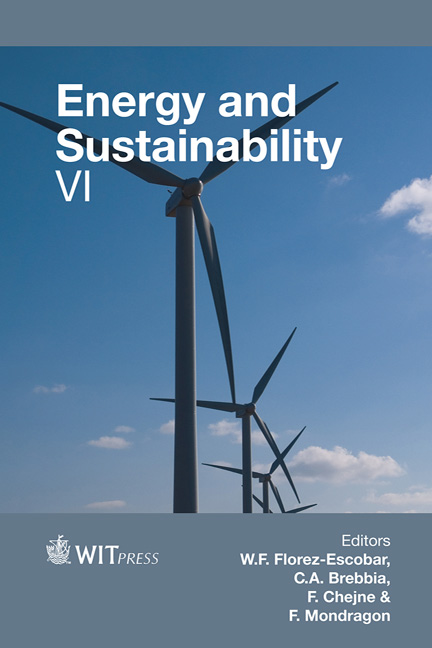Cotton Stalks For Power Generation In Baja California, Mexico By SWOT Analysis Methodology
Price
Free (open access)
Transaction
Volume
195
Pages
12
Page Range
75 - 86
Published
2015
Size
532 kb
Paper DOI
10.2495/ESUS150071
Copyright
WIT Press
Author(s)
M. Coronado, G. Montero, C. García, R. Torres, A. Vázquez, R. Ayala, J. León, L. Pérez, E. Romero
Abstract
Baja California is a state located in the northwestern region of Mexico. From 2003 to 2013 the average cultivated area reported was 228,094 ha; 9.5% of that area was used for the cotton crop Gossypium Hirsutum variety. Cotton harvesting generates considerable amounts of cotton stalks as biomass residuals. Cotton stalks have a high energy potential currently unexploited productively, and whose disposition is open burning. This activity is performed because it reduces the costs of land preparation for the next agricultural cycle and also prevents the spread of pests and diseases in future crops. The use of agricultural biomass waste has acquired more international relevance as a source of renewable energy. The replacement of fossil fuels and mitigation of greenhouse gas emissions responsible for climate change are among the most important environmental benefits of bioenergy. Therefore, the aim of this work was to analyze the factors that would affect the development of a transformation industry of biomass into energy by SWOT methodology. The energy potential for heat and power generation from cotton stalks was estimated. The results highlighted that from cotton stalks it is feasible to obtain an average of 1.40 PJ annually, equivalent to 39,082.67 m3 of diesel, and thus supply a power plant with 14.78 MW of installed capacity. This energy would contribute to the diversification of the energy matrix of Baja California, which currently depends on the external supply of fuels because it does not have proven reserves of petroleum resources.
Keywords
bioenergy, cotton stalks, power, renewable energy, SWOT analysis





